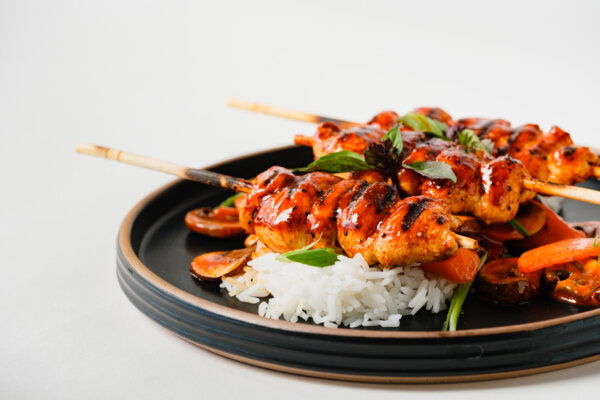
CREATING CONNECTIONS THROUGH INSIGHT-DRIVEN TRENDS
The team at Griffith Foods is proud to serve as your collaborative partner in innovation, helping our customers throughout the operator, retailer and manufacturer communities achieve continued success.
To start the new year off right, our global network of chefs and market research experts curated a list of key trends that reflect both the current state of the food industry and our prediction for what’s next. We’ll keep you engaged and informed throughout the year with monthly deep dives that bring each trend to life, filled with insights and culinary inspiration.
As we work together to explore new opportunities for your business, we can develop customized solutions through the lens of these impactful trends.
Let’s explore our Top Trends of 2022!
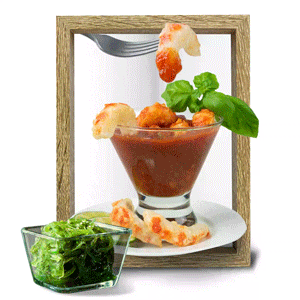
PLANT-BASED PROLIFERATION
What started with the humble veggie burger has become a worldwide sensation, driven by skyrocketing consumer demand. Plant-based innovation is here to stay, and it’s taking up more of the plate than ever. Advances in processing will perfect the taste and texture of beloved beef and chicken substitutes, while opening the door for complex new red meat, poultry and seafood analogues. Manufacturers will craft recipes that embrace the natural attributes of plant-based ingredients, whether in raw, roasted or powder format.
Textured pea and potato proteins, seaweed and lentils bring an appealing bite to finished items, mimicking sushi-style tuna, shrimp scampi or pork tenderloin—while soaking up sauces and seasonings for even more flavor. Neutral-tasting pulses, seeds and ancient grains can be used in combination to create meat and dairy alternatives that deliver on quality, nutrition and functionality. The new wave of plant-based alternatives will give consumers even greater reason to try meatless versions of their favorite foods, with minimal risk.
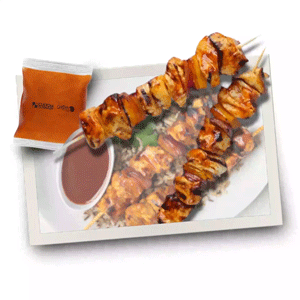
DELICIOUSLY EFFICIENT
Time and time again, restaurants, retailers and processors have demonstrated their ability to adapt to change and streamline operations to increase efficiency—but they’re still on the lookout for value-added solutions. New products and packaging that address the challenges of a labor shortage, simple meal preparation and smaller menus will move to the forefront. It’s all about speed-scratch formats that maintain flavor and food safety: think glazes, marinades and sauces in pre-packaged pouches; seasoned carriers like bao, tortillas and naan; or sous vide proteins that ensure even cooking every time.
On the retail side, freezers, grab-and-go areas and cold cases will be stocked with items like protein skewers, appetizers and meal kits that give consumers the ability to create restaurant-quality culinary experiences quickly and easily at home. Solutions that minimize guesswork and maximize flavor, convenience and accuracy will be in high demand across the food industry.
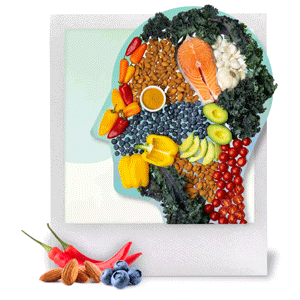
MINDFUL EATING
Rather than eating on autopilot, today’s consumers are becoming more aware of their food choices while also rejecting a “diet mentality.” By being more attuned to their own specific habits and needs, they’re seeking items that align with a more holistic, healthy lifestyle to nourish not only the body but also mental well-being. This thoughtful approach to eating can influence purchasing decisions across the board—what level of ingredient transparency is being provided? Which nutritional claims are made on-pack or on the menu? What benefits might this food provide, beyond satiety?
Opportunities abound for product developers and chefs to tap into this wave of consumer consciousness with functional ingredients such as kefir grains, pre- and postbiotics, ashwagandha and collagen. Foods purported to have cognitive, emotional and physical benefits—everything from managing stress to supporting immunity—will rise to the top. Beyond specific ingredients, the idea of permissible indulgence will continue to play a role in helping consumers balance their desires for health and happiness through food.

SENSORY ADVENTURE
Buckle up, because this trend is all about the total experience that food provides—flavor is just one delightful stop along the way. It’s about taking an artful approach to food, especially in the age of social media. The magic happens when all five senses are connected through unexpected flavors and seasonings, novel textures, temperatures and aromas, all wrapped up in a visually appealing presentation. Captivating combinations of these attributes will be seen across menu items and retail offerings that cater to creative home cooks and foodies alike.
There’s lots of room to experiment with crunchy textures, using popped grains, crisp-fried cheese and panko coatings, as well as more unusual ones—taking a cue from fluffy Japanese soufflé pancakes, whipped milks or silky pommes aligot. Unique hues inspired by color wheel relationships and complex spice levels that build over time can also engage the senses and leave a lasting impression.
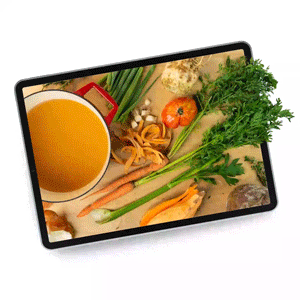
PURPOSEFULLY REPURPOSED
The effort to combat unnecessary food waste requires awareness, cooperation and change across the supply chain, from farming, processing and distribution to retailers, restaurants and consumers. Experts consider the reduction of food waste to be a viable solution to fighting climate change, in the pursuit of a more sustainable food system from the top down. We believe there are opportunities to innovate throughout processing, retail and foodservice, such as highlighting off-cuts of meat and offal on the menu, using vegetable scraps to make broths and sauces, or utilizing “ugly” fruit and vegetables.
The upcycled category will also continue to grow, as products made from food that would otherwise be sent to a landfill are transformed into delicious non-dairy milks, savory snacks, breading systems, flours and jams. New certification programs will help incentivize suppliers to commercialize food waste in a beneficial way. And further up the supply chain, chefs can experiment with byproducts that have second lives, such as gluten-free baking mix made with okara, leftover tofu pulp.

THE SNACKING WAY OF LIFE
Snacking is here to stay! The lines between dayparts are blurring, and one reason may be that consumers’ eating habits have been shifting away from full-size meals to more frequent middle-of-the-day snacks instead. Smaller meals can capitalize on convenience and portability for on-the-go eaters, while meeting consumer demand for snackable options that satiate. Mini stuffed flatbread sandwiches, one-bite wontons and savory hand pies add flavor excitement to a standard snack repertoire and can attract curious customers as refrigerated or frozen retail offerings.
Premium twists on high-protein snacks, such as beef jerky sticks and egg bites, can also be a jumping-off point for product development. Even traditional nutrition bars are getting an upgrade, boosted with ingredients like spirulina, chicory root fiber and marine collagen. On the restaurant side, chefs can benefit by reducing the size of their entrées, focusing on quality over quantity, and offering larger appetizers that can serve double-duty as sharable bites or a filling snack.

TAKE ME AWAY!
Now more than ever, consumers want to escape. But it may not be feasible to book a trip to a far-flung destination at this time. Is there another way to satisfy that wanderlust? Luckily, new retail and menu offerings will allow consumers to travel the world with their taste buds! While pandemic eating concentrated mainly on comfort food and nostalgic ingredients, consumers have become more adventurous, craving global flavors of all kinds.
Craveable international street foods like suya (meat skewers), “bubble” egg waffles and vada pav (potato dumpling sliders), along with region-specific ingredients, can transport them to exotic locales. At the same time, authentic flavors don’t necessarily have to be used in traditional ways. Chefs and retailers can get creative and incorporate familiar ingredients or fillings into carriers like bao, blue corn tortillas, burek or pierogi to create fun, fusion-style variations. Exciting menu offerings that travel well have the most to gain—because until consumers pack their bags, carryout and delivery remains standard fare.

CARBS REIMAGINED
Consumers are looking at the world of food differently, steering away from ultra-processed foods and becoming more interested in sustainable, cleaner ingredients. As low- or no-carb diet fads wane, consumers are more than willing to revisit quality carbohydrates, carefully adding them back into their daily diets to fuel the body. Culinary-minded individuals have started to explore homemade breads and pizza doughs using fermented whole grains, oats and small-batch flours.
Refined carbs are much less in demand than the new wave of carbohydrates, which incorporate gluten-free options, sprouted grains and hearty cereals that fuel and satisfy. Healthier pastas made with alternative flours or novel ingredients like beetroot or tempeh make room for those who want to eat more varieties of plants, too. No matter what, carbs are back—and if chefs and retailers can offer a new experience, they stand to gain a new hungry group of fans.

DESTINATION JAPAN
In a country where seasonal, plant-focused eating has contributed to an impressive average lifespan, it’s no surprise that the ingredients and flavors of Japanese cuisine are influencing food trends around the globe. The traditional Japanese diet is based on balance and simplicity—and health-minded consumers are paying attention. As interest in gut microbiomes accelerates, it’s the perfect opportunity to start experimenting with pickles and other fermented ingredients such as miso, umeboshi (preserved plums), shoyu or natto (a sticky mixture of fermented soybeans).
With rising food costs, menus can capitalize on smaller, exquisitely sourced portions and focus on bright, tantalizingly unique flavors and textures. On the snack or retail side, inspiration may come from dishes like crispy korokke patties, sweet taiyaki cakes or onigiri—rice balls filled with savory morsels of grilled salmon flakes, tsukudani (soy-marinated seaweed) or ponzu-marinated tuna.
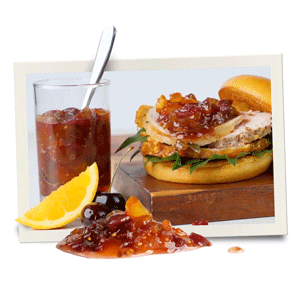
FRUIT AT THE FOREFRONT
When the natural sweetness of fruit intermingles with spicy, smoky or savory ingredients, the results are unexpected and unforgettable. It’s all about balance and flavor juxtaposition, with the added bonus of a health halo. Consumers are looking for fiery flavor combinations that bring an element of heat to something sweet, and fruit fits the bill. Think guava or cherries paired with the extreme heat of habaneros or scotch bonnet peppers, creating sweet-and-spicy flavors perfect for Caribbean-style dishes. Or barbecue enhanced with sweet, tart and tangy blueberries or oranges—the ideal complement for the bold smokiness of chipotle peppers.
Fruit-centric sauces, salsas, dips, marinades, glazes and jams can enhance dishes on restaurant menus, proteins in the deli case or heat-at-home meal kits. And be sure to consider a variety of cooking techniques to coax the most complex flavors out of any fruit. Smoking, roasting, charring or pickling can tell the story of a familiar fruit in a completely new way.

© 2022 Griffith Foods. All rights reserved.
